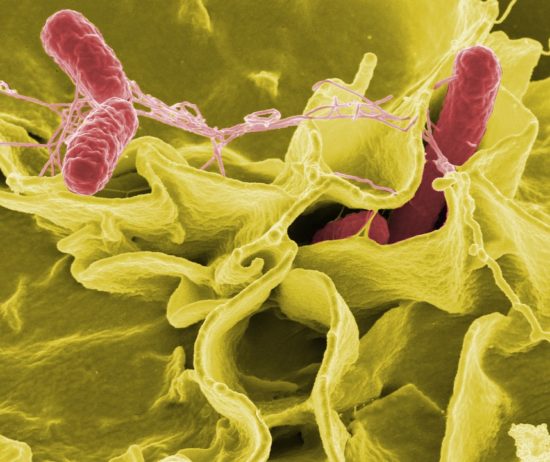“Let’s be careful with carbapenem-resistant Enterobacteriaceae”
“Carbapenem resistance in Enterobacteriaceae is the most serious contemporary antibiotic resistance threat because of the number of different resistance mechanisms, concomitant resistance to all or nearly all alternative antibiotics, high mortality associated with invasive infection, and the ability of these pathogens to spread rapidly across geographic regions.
Although initial reports described that carbapenem resistance in Enterobacteriaceae was due to over production of AmpC-mediated β-lactamases or extended-spectrum β-lactamases (ESBLs) in organisms with porin mutations, Klebsiella pneumoniae carbapenemase (KPC) represent now the most common mechanism of Carbapenem resistance in Enterobacteriaceae. KPC, an Ambler molecular class A enzyme that utilizes serine at the active site to facilitate hydrolysis of a broad variety of β-lactams is now a major challenge in antimicrobial resistance. The first plasmid-encoded serine carbapenemase in the KPC enzyme family was discovered in the USA in 1996 and reported in 2001. Since then, KPCs have spread and become endemic in many regions of the world. The rapid global dissemination of KPC genes is staggering. This can be attributed to a of three major mechanisms: international travel, patient-to-patient transmission of KPC-producing organisms, and interspecies transfer of KPC-resistant elements. Horizontal transfer of KPC resistance is a fascinating microbiological phenomenon that has devastating public health implications. A major concern is the emergence of colistin resistant KPC-positive Klebsiella pneumoniae isolates. This is of particular clinical relevance, as colistin is currently a key component of treatment combinations.
KPCs-producing carbapenem-resistant Enterobacteriaceae (CRE) are becoming an increasingly significant problem worldwide and pose a serious threat in clinical situations where administration of effective empiric antibiotics is essential to prevent mortality following bacteraemia and infections in immunocompromised patients including organ transplant recipients and those with cancer.
The Ambler class B metallo-β-lactamases (MBLs) differ from other carbapenemases by the utilization of zinc at the active site to facilitate hydrolysis. Although MBLs have been described in Pseudomonas species, they may be other causes of carbapenem resistance in some areas of the world. The most common metallo-beta-lactamase families include the IMP, VIM and NDM. A currently emerging MBL is the NDM (New Delhi metallo-beta-lactamase). NDM-1 was first detected in 2008 in a patient returning to Sweden from India. NDM-1 has been shown to be present at significant frequency within Enterobacteriaceae in India and has subsequently been shown to be present in bacterial isolates in several countries worldwide.
Carbapenem resistance in Enterobacteriaceae is an emerging phenomenon posing a threat to public health. As carbapenems have long been considered the antibiotic class of last resort in the treatment of infections caused by multidrug-resistant Gram-negative bacteria, the dissemination of carbapenem resistance has been declared a “global sentinel event”.
Carbapenem-resistant Enterobacteriaceae (CRE) can colonise or infect not only those patients who are debilitated, immunocompromised or critically ill, but also those who were previously healthy and became colonised or infected in healthcare settings practicing poor infection control. Although the transmission of multidrug-resistant organisms is frequently observed in acute care facilities, all healthcare settings are affected by the emergence of drug-resistant pathogens. The presence of CRE carriage has been described in patients from postacute care facilities, particularly long-term acute care hospitals showing to be a major contributor to its dissemination in multiple locales.”
Source: Global Alliance for Infections in Surgery



